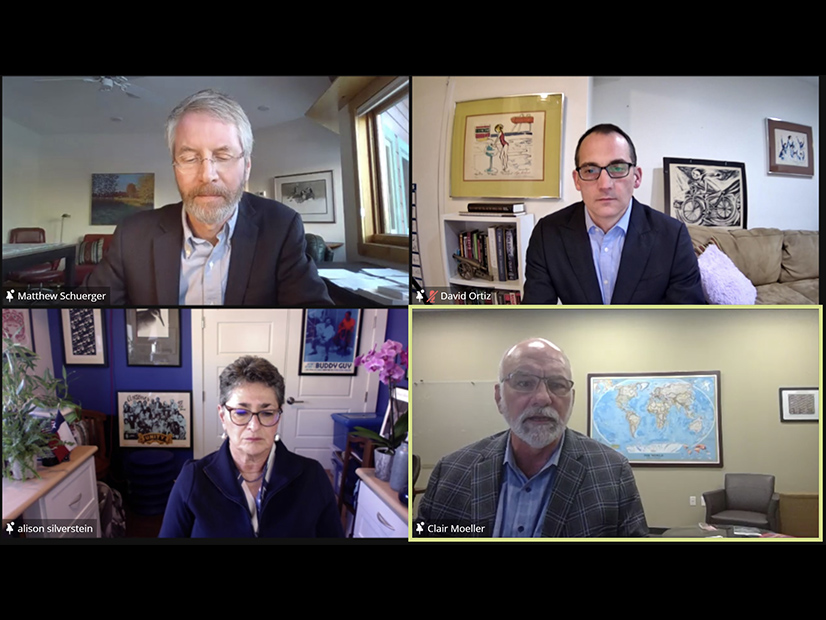On the first anniversary of Winter Storm Uri’s gut punch to the Midwest and Texas grid, industry experts discussed how to prevent climate change from setting off future mass blackouts.
Monday’s panel was part of the National Association of Regulatory Utility Commissioners’ Winter Policy Summit.
Texas-based energy consultant Alison Silverstein said Texans will be paying for the storm’s destruction in their bills for the next 20 years “without that ever making a difference” in grid reliability “or preventing the next disaster.”
Silverstein said it’s time for grid planners to start thinking about not “if it could happen, but when it will happen here.” She said the grid needs to be reinforced to handle more regular extreme weather and that using historical weather events is “no guide” in planning for future events.
“This requires us being very, very paranoid,” Silverstein said. “The threats are radically different than today.” She called for a different “scope of reference” and analyzing the costs of not making investments.
“Nobody was spared. It seemed that if you were in the area, you were going to suffer,” David Ortiz, acting director of FERC’s Office of Electric Reliability, said of power outages caused by last February’s storm.
Ortiz said the “simple” winterization of plants could have cut generation outages by about 50% and 60% in SPP and ERCOT, respectively.
“We have to remember that efficiency and resilience are enemies of each other,” said MISO President Clair Moeller, appearing on behalf of the ISO/RTO Council. He noted that resiliency requires advance fuel contracts and extra megawatts in capacity.
Moeller said RTOs and ISOs are considering a variety of strategies to make their generation fleets more available.
“Some of it’s a carrot; some of it’s a stick. Some of it’s an orange stick,” he joked.
Moeller said it’s clear that grid operators need higher reserve margins in the winter. “Big risk hours aren’t all on the peak period, and haven’t been for a while,” he said.
“It’s tremendously important to move away from this peak planning,” Ortiz agreed.
Moeller said coal and gas fuel supplies continue to be a concern, with the coal supply chain weakening to where only firm contracts are fulfilled with any degree of certainty. He pointed out that MISO’s Midwest region still relies on a 50% coal mix during the winter.
Natural gas generation operators aren’t ready for the flexibility that RTOs are going to start asking of them, Moeller said. He said gas-electric coordination will become even more important going forward.
Silverstein said conversations following the storm focused intensely on generation’s winterization and ignored that properly insulating customers’ homes could have alleviated demand. She said poorly-insulated Texas homes and their use of resistance heating contributed to the event’s severity.
Ortiz also cautioned against “staying on only the supply-side of the equation.”
“There’s a tremendous amount that can be done on the demand side,” he said.
Silverstein said more state regulatory bodies must devise meaningful demand-management programs.
Moeller said the ensuing “blame game” and court battles following last year’s winter storm are unhelpful. He also said data requests to MISO following the event were daunting and said a better organized data-sharing method would be useful.
“People are betting their lives and their livelihoods on us getting this right,” he said.



